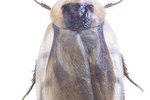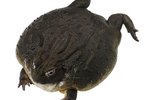
Turn over a rock and you’ll probably find a roly poly bug or two underneath. These bugs prefer to stay in dark, damp places during the day and only come out from their hiding places when it’s dark. Roly poly bugs have a fairly long lifespan and can survive for up to five years.
About Roly Poly Bugs
Roly poly bugs are known by a variety of names, including pill bug, sow bug and potato bug. The roly poly bug gets its name from its ability to roll up into a ball if it feels threatened. The bugs have a hard gray or brown shell, called an exoskeleton, seven pairs of legs and two pairs of antennae. The dull color of their shells helps them blend into the ground and avoid being spotted by predators. Roly poly bugs might not look like lobsters or crabs, but they are actually land-based crustaceans rather than insects.
Habitat
You’ll find pill bugs in grasslands, forests and rainforests. They thrive anywhere it’s wet and dark. In addition to rocks, you’ll also spot them under leaves, logs mulch, flower pots and pieces of bark. You might also see them indoors, particularly if you have a damp basement. Once a roly poly bug establishes a home, it digs into the ground to form a burrow. The bug will live out its life in the burrow and the female will lay her eggs there.
Family Life
Roly poly bugs reproduce in the spring. The bugs start their lives as eggs living in a fluid-filled pouch on their mother’s body. The pouch is where they spend the first two months of their lives after they hatch. The young roly poly bug quickly outgrows its shell and sheds its exoskeleton four or five times before it reaches adulthood, a process that takes approximately one year. Male and female roly poly bugs work together to raise their offspring and gather food. The Animal Diversity Web website notes that cleaning the burrow is a family activity. The entire family pitches in to remove fecal pellets from the burrow. When the young roly poly bugs become adults, they create their own burrows and look for mates.
Food
Roly poly bugs creep out of their burrows at night and look for decaying plants and animals and fungi to eat. They play an important role in the ecological process because they help speed up the decomposition of dead vegetation and plants. Roly poly bugs also eat live plants and can damage young plants and seedlings in gardens. Roly poly bugs are threatened by several types of predators, including birds, frogs, ants, centipedes and spiders.
References
Photo Credits
-
Jupiterimages/Photos.com/Getty Images
Writer Bio
Working at a humane society allowed Jill Leviticus to combine her business management experience with her love of animals. Leviticus has a journalism degree from Lock Haven University, has written for Nonprofit Management Report, Volunteer Management Report and Healthy Pet, and has worked in the healthcare field.




